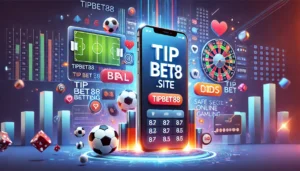What is DeviceURL for VEX Brain Node.js?
When using Node.js, DeviceURL is a unique link that joins your PC or other devices to the VEX Brain. Consider it a bridge that facilitates communication between various components of your robot. A clear and functional relationship between the robot’s hardware and software is crucial in robotics, especially when working with VEX systems.
Smooth functioning is made possible by this link, which enables programmers to provide commands to the robot and get information back. Programmers can leverage Node.js and DeviceURL to enhance their interaction with the VEX brain.
This unique technology is crucial for constructing sophisticated robotic operations, making it easier for developers to design and control their robots. Learning about DeviceURL can boost users’ robotics projects. It can spark their creativity and innovation.
A robot’s ability to function more efficiently can be greatly increased by using DeviceURL, which enables users to collect data, solve problems, and enhance performance in general.
Table of Contents
ToggleUnderstanding VEX Robotics
Especially with children and teachers, VEX Robotics is a well-liked platform for creating and configuring robots. Its goal is to make robotics education interesting and enjoyable. You can create different robot designs by combining the VEX system’s parts. These include the VEX Brain, motors, sensors, and structural sections. The VEX Brain operates like the robot’s brain, guiding its activities based on the commands it receives.
Learners may understand key ideas like engineering, programming, and problem-solving with the help of VEX Robotics. Robotics is a great choice for schools. It builds critical thinking and teamwork through hands-on work.
Moreover, a variety of competitions offered by VEX Robotics motivates students to use the knowledge they have gained in practical settings. These activities let students show their work. They will learn important lessons about strategy and collaboration.
How Does DeviceURL Work for VEX Brain in Node.js?
DeviceURL functions by giving Node.js apps a unique address to use when interacting with the VEX Brain. The DeviceURL serves as a conduit for commands and data when a user develops a Node.js program. To provide seamless data transfer and communication, this method entails connecting the VEX Brain to the user’s device.
The VEX Brain receives commands from the Node.js application over the DeviceURL, processes the data, and then performs the associated action. The VEX Brain will run the motors if the programmer sends a command through the DeviceURL to move the robot forward. For robotics programming to be successful, hardware and software must work together seamlessly.
Additionally, by obtaining data from many sensors attached to the VEX Brain, DeviceURL enables developers to keep an eye on the robot’s performance. Programmers can use this data to assess the robot’s condition. It will help them make informed decisions on changes and upgrades. DeviceURL’s smooth operation makes programming enjoyable. So, it’s a must-have tool for anyone using VEX Robotics and Node.js.
Key Benefits of Using DeviceURL for VEX Brain Node.js
Programming robotics becomes simpler and more effective when DeviceURL for VEX Brain in Node.js is used. The ability to create a dependable link between the robot and the programmer’s device is one of the primary benefits. The link enables real-time communication. It gives instant feedback and control over the robot’s movements.
The simplicity and convenience of usage that DeviceURL provides is another important advantage. It makes it possible for programmers to instantly access and control the VEX Brain, even with little programming knowledge. Its accessibility has sparked interest in robotics and STEM—science, technology, engineering, and math.
Also, DeviceURL improves the programming experience. It lets developers add cutting-edge features to their robotics projects. Programmers can access many sensors and motors. This lets them create more complex behaviors and interactions for their robots.
This flexibility lets users test new ideas and solutions. It creates endless opportunities for creativity and innovation.
Setting Up DeviceURL for VEX Brain with Node.js: Step-by-Step
DeviceURL configuration for the VEX Brain using Node.js consists of a few simple steps. First, make sure your computer is running the required software. This covers any pertinent libraries that assist VEX Robotics programming as well as Node.js. Once you have the necessary software, do the following:
Connect Your VEX Brain:
Connect your VEX Brain to your computer physically first. Depending on your arrangement, you can either use a USB cable or create a wireless connection. Make sure the VEX Brain is turned on and prepared for dialogue.
Install Required Packages:
Open your terminal or command prompt and install any necessary Node.js packages. These packages might include libraries specifically designed for interacting with VEX Robotics. Use commands like npm install <package-name> to install the required libraries.
Get DeviceURL:
Once everything is set up, you will need to find the Device URL for your VEX Brain. This URL is typically provided in the documentation or can be found in the settings of your VEX programming environment.
Write Your Program:
Start writing your Node.js program, using the DeviceURL to establish a connection to the VEX Brain. Include commands for the actions you want your robot to perform.
Run Your Program:
After writing your code, save your work and run the program in your terminal. Check the output to ensure that the commands are sent correctly and that the VEX Brain responds as expected.
You can quickly configure DeviceURL for your VEX Brain and begin using Node.js to program your robot by following these steps. Through this setup process, you can delve into the exciting field of robots and inspire originality and creativity in your ideas.
Read More: Unlock PepperBoy Technology Insights at Politicser.com
Troubleshooting Common DeviceURL for VEX Brain Node.js Issues
While using DeviceURL for VEX Brain in Node.js, you may encounter some common issues. Here are a few troubleshooting tips to help you resolve them quickly:
Connection Problems:
If your program cannot connect to the VEX Brain, double-check your physical connections and ensure that the VEX Brain is powered on. If using a wireless connection, verify that your device is connected to the correct network.
Invalid DeviceURL:
If you get an error that the DeviceURL is invalid, check that you copied it correctly from the documentation or settings. Ensure there are no typos or missing characters in the URL.
Data Transfer Issues:
If commands are not being executed as expected, check your code for errors. Check for syntax errors or bad commands. They may confuse the VEX Brain.
Updating Software:
Sometimes, using out-of-date software can cause problems. Make sure that any necessary libraries and Node.js are up to date. For best results, keep an eye out for updates and apply them as needed.
These troubleshooting steps can help you fix frequent DeviceURL for VEX Brain in Node.js issues. You can then get back to your robotics projects without delay.
Practical Applications of DeviceURL
Robotics uses for DeviceURL for VEX Brain in Node.js are varied and useful. One such application is in educational environments, where students gain practical experience while learning engineering and programming concepts. Students can use DeviceURL to build basic robots. The robots must navigate a maze or react to sensors.
Another use is in competition robotics, where groups construct robots for a variety of tasks using VEX systems. Programmers can incorporate sophisticated features like data logging, obstacle avoidance, and autonomous navigation with DeviceURL.
These features are essential for competing successfully. Teams can use this feature to optimize the performance and strategy of their robots and gain a competitive advantage.
Also, engineers and enthusiasts may use DeviceURL. They are working on creative solutions to tough problems in R&D projects. Users can use DeviceURL and Node.js to test advanced tech, like AI and machine learning, to improve their robots. This research pushes the limits of what is workable in the realm of robotics and fosters creativity.
Best Practices for Using DeviceURL
To make the most out of DeviceURL for VEX Brain in Node.js, here are some best practices to follow:
Keep Your Code Organized:
Clean, organized code is key to effective programming. Use comments and clear naming conventions to help others understand your code. This practice also makes it easier for you to revisit your projects later and make necessary adjustments.
Test Your Programs Regularly:
Regular testing is crucial to ensure that your robot operates as intended. Test individual components and the entire system frequently to identify any issues early on. This approach allows you to troubleshoot problems and install fixes without significant delays.
Leverage Online Resources:
There is a wealth of online resources available for VEX Robotics and Node.js programming. Use forums, tutorials, and documentation to enhance your understanding and skills. The community can offer insights and support for your robotics projects.
Document Your Projects:
You must document your projects for future reference. Record the steps you took, any challenges you faced, and the solutions you implemented. This documentation can serve as a valuable resource for you and others interested in similar projects.
By following these best practices, you can improve your experience with DeviceURL for VEX Brain in Node.js. This will lead to more successful and enjoyable robotics projects.
Future Trends in DeviceURL for VEX Brain Node.js
The possibilities for DeviceURL for VEX Brain in Node.js are fascinating as technology advances. A big reason robots can take on more complex jobs is better sensors and actuators. As new hardware becomes available, programmers can explore new apps. They can also expand their robots’ capabilities.
The increasing focus on cooperation and teamwork in robots is another trend. Many programs now encourage students to collaborate on projects. This builds vital skills, such as communication and problem-solving. This growing collaboration will likely lead to more interdisciplinary projects that merge robotics with fields like data science and AI.
As more people become interested in robotics, a rise in user-friendly programming resources and tools is likely. This change will aid novices’ education and curiosity about robotics. It will grow a community of professionals and hobbyists. With DeviceURL for VEX Brain in Node.js, there are endless chances for robotics creativity and invention. It seems to promise a bright future.
Conclusion
An essential part of utilizing Node.js to program the VEX Brain is DeviceURL. It enables smooth communication between the robot’s hardware and software. This lets users create inventive and useful robotics projects. Programmers can enhance their skills and use VEX Robotics to its full potential. They must understand DeviceURL and follow best practices.
As robotics become more popular, efficient tech like DeviceURL will be vital. You may put yourself at the forefront of this subject. By doing so, you will tackle new problems and provide solutions. To do this, explore the trends and applications around DeviceURL.
FAQs
1. What is DeviceURL in VEX Brain Node.js?
DeviceURL is a unique link. It connects your Node.js program to the VEX Brain. This allows for communication and control of the robot.
2. How do I set up DeviceURL for VEX Brain?
To set up DeviceURL, connect your VEX Brain to your computer. Then, install the necessary software, get the DeviceURL, and write your Node.js program.
3. What are the benefits of using DeviceURL?
Using DeviceURL enables real-time communication. It simplifies programming for beginners. It also allows for advanced features in robotics projects.
4. What common issues might I face with DeviceURL?
Common issues include connection problems, invalid DeviceURL errors, and data transfer issues. Troubleshooting steps can usually fix them.
5. Can I use DeviceURL for educational purposes?
Yes, DeviceURL is popular in education. It helps students learn programming and engineering through hands-on work with robotics.






1 thought on “What Is DeviceURL for VEX Brain Node.js? Ultimate Guide”